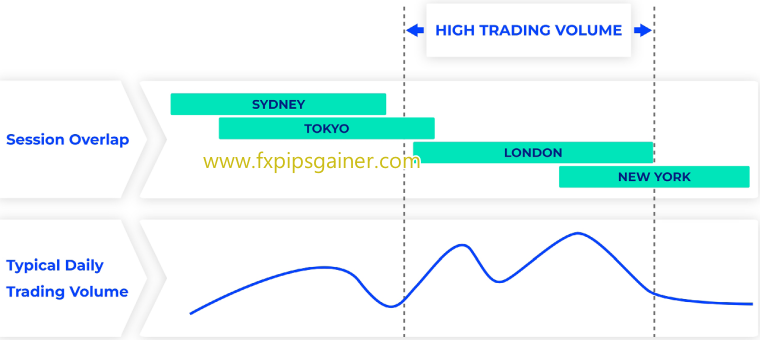Maximize your profit by copy our Trade
Long and Short Positions in Trading
Overview of CFD Trading
When trading Contracts for Difference (CFDs), the trading mechanics differ from traditional buying and selling of assets. Instead of purchasing an asset outright, you open a buy position and eventually close it. The profit or loss realized from the trade is based on the difference between the opening and closing prices.
Realizing Profit or Loss
- Once the position is closed, the realized profit or loss is calculated and immediately adjusted in the account balance.
- If the closing price is greater than the opening price, a profit is made; otherwise, a loss occurs.
Understanding Long Positions
A long position is taken when you anticipate that the price of an asset will rise. You profit when the market’s price increases.
How Long Positions Work
- To open a long position, you buy first and then close the position at a future date.
- The relationship can be summarized as: Sell price > Buy price.
- If the market price increases post-purchase, you will realize a profit; if it decreases, you will incur a loss.
Example of a Long Position
Suppose the price of Bitcoin is quoted at $20,000 and you expect it to rise. You decide to open a long position:
- Buying Price: $20,000
- If the price increases to $21,000, you close the position and make a profit of $1,000.
- If the price drops to $19,000, closing the position results in a loss of $1,000.
Understanding Short Positions
A short position is taken when you expect that the price of an asset will decline. You profit when the market’s price decreases.
How Short Positions Work
- To open a short position, you sell first and then buy back the asset later.
- The key relationship is: Sell price < Buy price.
- Profit is made if the market price falls, while a loss is incurred if the price rises.
Example of a Short Position
Consider that Bitcoin is quoted at $20,000, and you expect the price to fall. You decide to open a short position:
- Selling Price: $20,000
- If the price decreases to $19,000, you close the position and realize a profit of $1,000.
- If the price rises to $21,000, closing the position results in a loss of $1,000.
Conclusion
Understanding long and short positions allows traders to adapt to market movements in both directions. By employing these strategies, traders can position themselves to profit from rising and falling asset prices.
Recent Posts
- The 100% Profitable Trading Approach: Maximize Gains with Minimal Risk
- The Head and Shoulders Chart Pattern
- Bullish and Bearish Rejection Blocks: Identifying Key Trading Opportunities
- Just Market: Is It Worth Your Time and Money?
- Why LiteFinance Stands Out: A Comprehensive Review
- Understanding XAUUSD: Gold Strategy and Central Bank Reserve Management
- Hotforex Copy Trading Service
- Understanding Profit Factor: A Key Metric for Trading Success
- Supply and Demand Dynamics: How Gold Production Affects XAUUSD
- The Safe Haven: Gold as a Strategic Investment During Economic Downturns
- Mastering Deception: How to Scam as a Forex Signal Provider
- The Impact of Rising Bond Yields on Gold (XAUUSD)
- Understanding the Correlation Between Oil Prices and Gold (XAUUSD)
- The Impact of Geopolitical Events on Gold Demand (XAUUSD)
- Fundamental Strategy Overview: XAUUSD (Gold)
- Understanding the Role of Gold (XAUUSD) as an Inflation Hedge
- How Central Bank Interest Rates Influence Gold Demand
- Gold Holding Trading System
- From Novice to Pro: Navigating the ICT Propulsion Block in Trading
- Single Candle Order Block
- Is Scalping Right for You? Understanding the Advantages and Disadvantages
- The Dangers of Screenshot Trading: What You Need to Know
- Guidance for New Traders in Forex
- Forex Signal
- Understanding Market Psychology in Trading
- The Power of Order Blocks: Key Concepts Every Trader Should Know
- Understanding Imbalance and Fair Value Gaps (FVG)
- External and Internal Structure
- Causes of Market Pullbacks: What Every Investor Should Know
- Highs and Lows in Financial Markets: Key Concepts for Traders
- The Definitive Supply and Demand Trading Guide for Forex Traders
- Trading the Hanging Man with Pivot Points
- Trading the Hanging Man with Fibonacci Retracement
- Navigating Perfect Money: Pros and Cons You Need to Know
- Mastering the Super Signal Strategy with Donchian Channels
- Why Many Traders Lose in Forex: A Focus on Gold (XAU/USD)
- Beware of Forex Market Manipulation: Essential Insights for Traders
- Trading the Hanging Man with RSI Divergences
- The Forex Trader’s Blueprint: Understanding Supply and Demand Dynamics
- Trading the Hanging Man with Moving Averages
- Hanging Man Candlesticks Pattern
- Smart Money Concept(SMC) in Forex Market
- Advantages of Exness Forex Broker
- Trading the Hanging Man with Resistance Levels
- Bullish Harami Candlesticks Pattern
- Scalping Trading Strategy
- Trading with Confidence: A Closer Look at HFM Broker
- Swing Trading Strategy
- Breakout Trading Strategy
- XM Forex Broker: Your Gateway to Successful Trading
Maximize your profit by copy Our Trade




